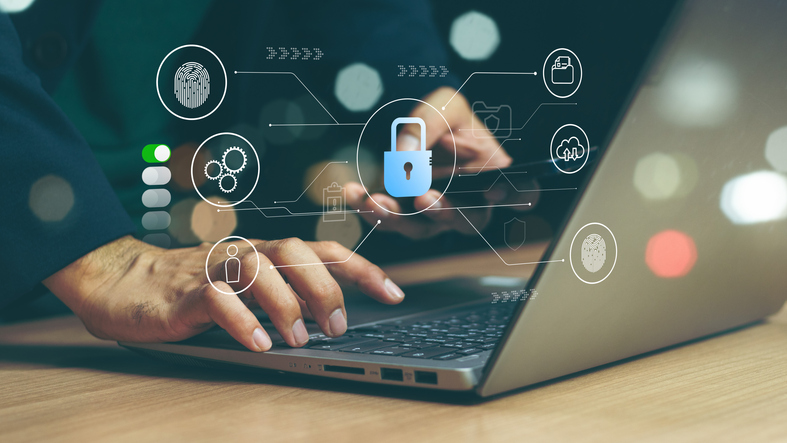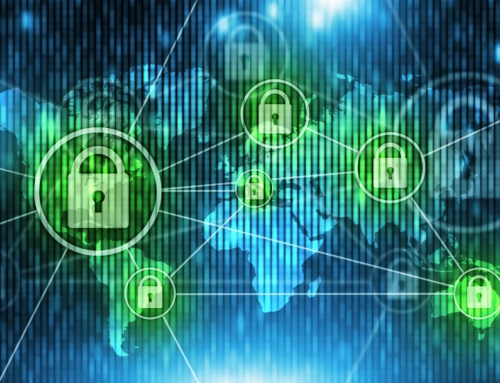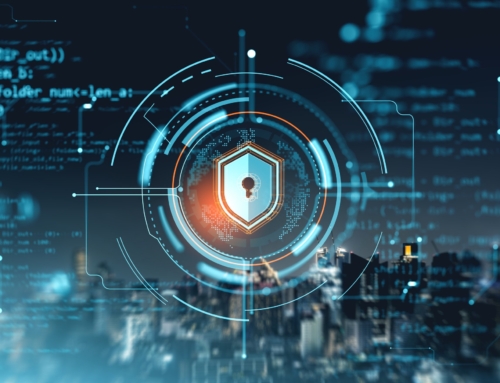Creating a Post-Ransomware Attack Cybersecurity Roadmap
Introduction to Ransomware and Its Aftermath
In today’s digital age, ransomware has emerged as one of the most pervasive cybersecurity threats facing our organization and clients. As an IT management and network services provider, we understand the complexities of this malicious software, which encrypts critical data and renders systems inoperable. In the wake of such an attack, it’s imperative for companies to have a Post-attack cybersecurity roadmap that can effectively navigate the turbulent aftermath.
The Importance of a Post-attack Cybersecurity Roadmap
After an unfortunate ransomware incident, the next steps undertaken by an organization are crucial for its recovery and future security posture. A Post-attack cybersecurity roadmap serves as the blueprint for these steps. We prioritize the development of this strategic guide, which ensures systematic remediation and safeguards against subsequent vulnerabilities. It’s our commitment to not only restore operations swiftly but to also bolster defenses in anticipation of potential threats.
Initial Response: Evaluating the Damage and Containment
Immediate action is critical once a ransomware attack is identified. Our initial response concentrates on damage evaluation and containment policies designed to halt the spread of the attack. This stage is essential in shaping the overall Post-attack cybersecurity roadmap. By understanding the scope of the impact and securing the remaining unaffected assets, we lay the groundwork for a comprehensive recovery strategy.
Creating a Strong Recovery Plan with the Post-attack Cybersecurity Roadmap
Assessing Security Vulnerabilities Post-Attack
In the aftermath of a ransomware incident, one of our first priorities is to conduct a meticulous post-attack audit. This crucial assessment allows us to uncover the specific vulnerabilities that were exploited and understand the depth of the breach. Consequently, we establish a clear overview of the weaknesses within the existing security framework to ensure these are rectified in the post-attack cybersecurity roadmap.
We methodically examine all aspects of our network infrastructure, from endpoint security to user access protocols. Additionally, we consider the possibility of latent threats or backdoors that may have been installed by the attackers. This diligent evaluation is fundamental in crafting a robust and resilient cybersecurity strategy that mitigates the risk of future incidents.
Implementing Enhanced Security Measures
Once vulnerabilities are identified, we move swiftly to bolster our cybersecurity defenses. We prioritize the implementation of enhanced security measures such as multi-factor authentication, advanced encryption, and real-time monitoring systems. Moreover, we actively seek out cutting-edge cybersecurity solutions that offer proactive threat detection and response capabilities, significantly reducing the window of opportunity for potential attackers.
Furthermore, we revise our incident response protocols to streamline the recovery process. Our revised plan includes clear communication channels to ensure that all stakeholders are informed and that we can orchestrate a coordinated response to swiftly neutralize any future threats.
Training and Awareness Programs
Building a culture of cybersecurity awareness is a cornerstone of our post-attack cybersecurity roadmap. We recognize that our colleagues are the first line of defense against ransomware and other cyber threats. Thus, we deploy comprehensive training programs to raise awareness of the latest threat vectors and encourage safe computing habits.
Our awareness initiatives include regular simulation exercises that test our team’s ability to recognize and react to phishing scams and other deceptive tactics used by cybercriminals. By empowering our team with knowledge and the right tools, we fortify our organization’s human firewall, making it a formidable barrier against future attacks.
Regularly Updating and Testing the Cybersecurity Roadmap
In our dynamic digital landscape, a static security posture is untenable. We understand that maintaining resilience against evolving cyber threats requires regular updates to our cybersecurity roadmap. We undertake continuous monitoring of the threat environment and adjust our security measures accordingly.
- Periodic review of security policies and procedures to align with emerging threats
- Integration of new security technologies and best practices into our strategic framework
- Continuous testing and drills to assess the effectiveness of our response plan under various scenarios
This proactive approach to security management ensures that our defenses not only meet current requirements but are also designed to adapt to future challenges.
Did you know? After a ransomware attack, a cybersecurity roadmap not only aids in recovery but is also pivotal in preventing future incidents by addressing previously exploited vulnerabilities.
Fortifying Your Future with a Post-attack Cybersecurity Roadmap
In the wake of a ransomware attack, it’s easy to get caught up in the immediacy of restoration and overlook the bigger picture of long-term resilience. But as we’ve explored, developing a Post-attack cybersecurity roadmap is crucial to not only bounce back from the current crisis but also to safeguard against future threats. At Alvaka, we consider this roadmap to be the blueprint for your company’s digital fortification, a strategic guide to help you navigate the complexities of the cybersecurity landscape post-breach.
Reflection and Reinforcement: Our Commitment to Your Security
The construction of a Post-attack cybersecurity roadmap involves a reflective process where we work with you to analyze the incident, identify the enhancements needed for your cybersecurity infrastructure, and enforce new policies that minimize the risk of future incidents. This roadmap is not a one-off checklist, but a dynamic, evolving strategy tailored to your organization’s needs and the ever-changing cyber threat environment. Our expertise ensures that the fortifications we build into this roadmap stand the test of time and the ingenuity of cybercriminals.
Collaborative Endeavors: Partnering for a Robust Recovery
Implementing a Post-attack cybersecurity roadmap is a journey that requires collaboration, expertise, and dedication. It’s about more than just restoring operations; it’s about transforming your information security practices into a competitive advantage. With Alvaka’s seasoned professionals at your side, we’ll walk you through every step of the recovery and strengthen your systems to resist the increasingly sophisticated threats in the digital age. Through this cooperative effort, we will enhance your staff’s awareness, fortify your IT ecosystem, and ensure that your business’s resilience is at the heart of our strategy.
Together, we’ll leverage this opportunity to not only achieve an effective ransomware recovery but to emerge stronger, better prepared, and more secure than ever. Your trust in us propels our commitment to excellence, and your security is the measure of our success. Allow us to support and guide you in sculpting a robust cybersecurity posture that not only addresses the vulnerabilities of today but also anticipates and defends against the challenges of tomorrow.
Your Path to Recovery and Beyond: Next Steps with Alvaka
Embarking on the path to recovery with Alvaka means embracing a state of continuous adaptation and vigilance in your cybersecurity practices. The expertise and insights we bring to the table ensure that your post-attack recovery is just the beginning of an ongoing process of security enhancement. By choosing Alvaka, you’re not simply enlisting a service provider; you’re gaining a partner dedicated to the enduring strength and integrity of your business operations. Let’s unite in our efforts to not only rebuild but reinvent your cybersecurity environment, forging a path towards a resilient and secure future.
FAQ
What is ransomware and how does it affect our organization? ▼
Ransomware is a type of malware that encrypts our data, rendering it inaccessible, and demands a ransom for the decryption key. An attack can lead to significant downtime, loss of sensitive data, and financial loss, profoundly affecting our cybersecurity posture and organizational operations.
Why is a post-attack cybersecurity roadmap crucial for our organization? ▼
A post-attack roadmap is crucial because it provides a strategic framework for effectively responding to and recovering from an incident. Additionally, it helps us to reinforce our defenses against future attacks, ensuring the resilience and continuity of our business processes.
What are the first steps we should take following a ransomware attack? ▼
Immediately after a ransomware attack, we should focus on assessing the damage to understand the scope of the incident. Concurrently, we should work on containing the breach to prevent further spread. These critical first steps lay the groundwork for the development of a comprehensive recovery plan.
How do we conduct a security audit post-attack? ▼
Following an attack, conducting a security audit involves examining our network for vulnerabilities, analyzing how the attackers gained access, and evaluating the effectiveness of our current security measures. By doing so, we can identify and address weaknesses in our cybersecurity infrastructure.
What elements should our post-attack recovery plan include? ▼
Our recovery plan should include steps for data restoration, communication strategies with stakeholders, legal considerations, and the strengthening of security protocols. Furthermore, it should have a clear timeline for each recovery stage and set benchmarks to measure our progress.
How can our organization prevent future ransomware attacks? ▼
To prevent future ransomware attacks, we can implement multi-factor authentication, conduct regular security training, deploy advanced threat detection tools, and maintain up-to-date backups. Additionally, it’s imperative to create and enforce comprehensive cybersecurity policies.
Which stakeholders should be involved in creating our cybersecurity roadmap? ▼
Creating an effective cybersecurity roadmap should involve key stakeholders including IT professionals, executive management, legal counsel, and departments like human resources. Collaboration among these stakeholders ensures that the roadmap is comprehensive and aligns with our organizational goals.
Should we pay the ransom if attacked by ransomware? ▼
Paying the ransom is not recommended as it does not guarantee the return of our data and may encourage future attacks. Instead, we should focus on our response and recovery plan. Moreover, working with law enforcement and cybersecurity experts provides alternative strategies to mitigate the situation.
What is the role of backups in our recovery from a ransomware attack? ▼
Effective backups are our safety net in ransomware recovery. Regularly updated and securely stored backups can allow us to restore critical data without capitulating to ransom demands. Ensuring that our backup strategy is robust and tested frequently is a cornerstone of our defense strategy.
How often should we update our cybersecurity roadmap? ▼
Our cybersecurity landscape is continually evolving; therefore, we should regularly update our roadmap to adapt to new threats. A best practice is to review and refine the roadmap semi-annually or immediately following significant changes in technology, industry regulations, or the discovery of new vulnerabilities.








 Smoke testing is a term used to describe the testing process for servers after patches are applied.
Smoke testing is a term used to describe the testing process for servers after patches are applied.  This is a basic cost calculator for you to compute your typical monthly cost for patching your servers, PCs, laptops, tablets and associated application software. It also forms the basis for you to begin calculating your Return on Investment for software patching, or for comparison with alternatives to the manual process of patching operating systems and application software—such as Patch Management as a Service, also known as Vulnerability Management as a Service.
This is a basic cost calculator for you to compute your typical monthly cost for patching your servers, PCs, laptops, tablets and associated application software. It also forms the basis for you to begin calculating your Return on Investment for software patching, or for comparison with alternatives to the manual process of patching operating systems and application software—such as Patch Management as a Service, also known as Vulnerability Management as a Service.